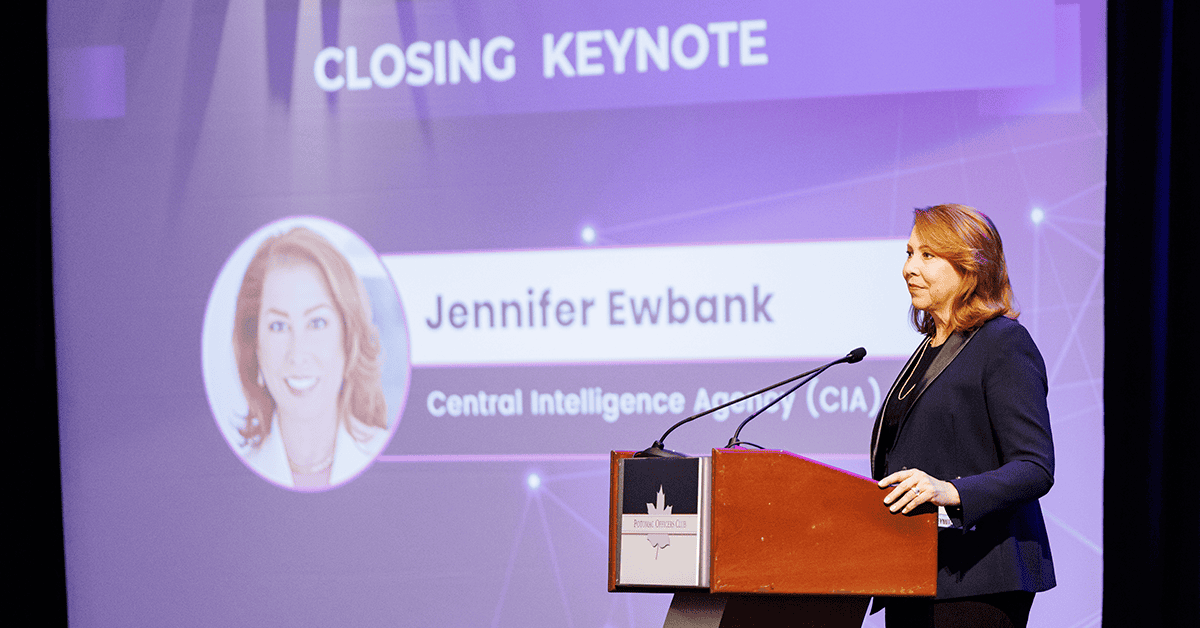The U.S. Intelligence Community is saddled with many of the same challenges as organizations from various sectors that process information in attempts to make it actionable: an excess of data and a need to find efficient and dependable ways to sort through it.
As information assessors, IC representatives like Rhett Skiles, deputy assistant secretary for cyber and emerging technology intelligence in the Office of Intelligence and Analysis at the U.S. Department of the Treasury, say that it is the IC’s job to identify which data is important and of a high quality.
“The biggest question for us is, while there’s no dearth of data, is it the right data?” Skiles remarked at the Potomac Officers Club’s 9th Annual Intel Summit on Thursday during the event’s first panel discussion.


The Intel Summit was a rousing success and offered a forum for many of the industry’s brightest minds to convene and begin working out the solutions of tomorrow. Don’t miss POC’s next big symposium: the Nov. 15th Homeland Security Summit, hosted at the Hilton-McLean in Virginia. Register here now!
The only way the IC is going to be able to enable the country to survive and maintain hegemony in the global power struggle, which features “state actors and and non-state actors at a level that we’ve never seen before, is being able to sort through all the noise and get to what actually matters,” according to Skiles.
One of Skiles’ conversation partners on the panel (and an “unwitting mentor” to him in recent years) was Dana Madsen, national intelligence manager for Cyber at the Office of the Director of National Intelligence. Madsen suggested that artificial intelligence might be a key way to help expedite processes for data organization, asserting specifically that it might be used to integrate the various types of intelligence, such as open source or OSINT and human intelligence or HUMINT, with traditional intelligence. AI would in this case be used as a “bridge,” Madsen said.


OSINT was highlighted specifically by Madsen as a “critical resource” in terms of the IC’s efforts to “keep up with the proliferation of threats.” OSINT is defined as intelligence gathered from publicly available sources and Skiles noted that “the digital world represents a bastion of knowledge.”
“Open source intelligence is…important…both to understand regional trends and global coverage, but also to identify where you actually focus the scarce collection resources to collect exquisite intelligence and minimize the operational risk while maintaining situational awareness,” Madsen said.
The panelists discussed how “geopolitical expertise” is another key ingredient when blending or integrating various types of intelligence, and that practitioners must be mindful to have specialists on board to contribute this when using automated tools for such tasks.
The private sector voice on the panel, Redhorse Corporation Senior Vice President of National Security Services Vincent Bridgeman, said that AI tools utilized in consequential intelligence analysis activities must “offer transparency” as well as come with a “well-documented, explainable method for training and testing your model.” He said models need to be explainable and be continuously monitored, indicating that he believes there must be human involvement at all stages.
Moderator Stu Solomon, president of Recorded Future, synthesized that achieving successful data fusion was at the heart of the conversation, and while the panelists relayed their belief in the potential of AI to effectively impact and sort various kinds of intelligence, Skiles nonetheless cautioned that we’re not there yet.
“How can we automate it so that we can get to the point where AI is actually useful? That’s one of our biggest challenges,” he stipulated.









